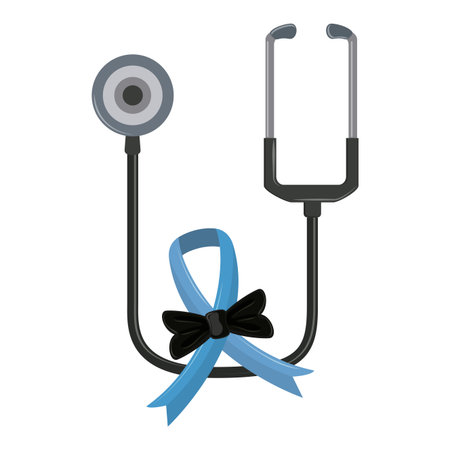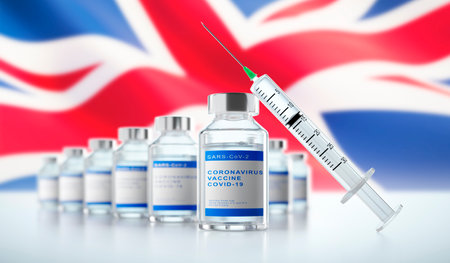Understanding Thread Lifts in the UK
Thread lifts have become increasingly popular across Britain as a minimally invasive alternative to traditional facelift surgery. This non-surgical cosmetic procedure involves the use of dissolvable threads, which are carefully inserted under the skin to lift and tighten sagging facial tissues. The appeal of thread lifts lies not only in their ability to deliver natural-looking results with minimal downtime but also in their alignment with the British preference for subtle enhancements over dramatic changes. Many locals view thread lifts as a practical way to address early signs of ageing without committing to major surgical intervention. The convenience, affordability, and discreet nature of the treatment have contributed to its growing acceptance, particularly among those seeking a refreshed appearance while maintaining a typically understated British sense of style.
2. Most Common Side Effects Experienced
When considering a thread lift in Britain, it’s natural to be curious about what side effects you might encounter during the recovery process. Based on local patient experiences and guidance from the NHS, most people report only minor and temporary symptoms following this minimally invasive procedure.
Typical Side Effects Noted by British Patients
The table below summarises the side effects most frequently mentioned by patients across the UK after a thread lift:
| Side Effect | Description | Duration (Typically) | NHS Advice |
|---|---|---|---|
| Mild Swelling | Noticeable puffiness around treated areas, especially cheeks and jawline. | Up to 1 week | Apply a cool pack, avoid strenuous activity for a few days. |
| Bruising | Purple or blue marks near thread entry points. | 7-10 days | Keep head elevated, refrain from alcohol, use arnica cream if advised. |
| Tenderness | Sensitivity or soreness along the threads’ path under the skin. | A few days to 2 weeks | Avoid touching or massaging the area, use paracetamol if needed. |
| Minor Redness | Slight redness at entry or exit points of threads. | 48 hours – 1 week | Keep area clean, avoid makeup for 24 hours post-procedure. |
| Sensation of Tightness | A feeling that skin is pulled or tight initially after treatment. | Several days to 1 week | This usually settles as tissues adjust; consult clinic if persistent. |
Understanding the Local Experience
British clinics commonly reassure patients that these symptoms are part of the body’s natural healing response. The majority of individuals report returning to their normal routines quickly, with only mild discomfort. According to NHS advice, complications are rare when procedures are carried out by qualified practitioners. However, anyone experiencing prolonged swelling, severe pain, or signs of infection should seek prompt medical attention.
In summary, while side effects such as swelling, bruising, and tenderness are typical after a thread lift in Britain, they are generally short-lived and manageable with simple at-home care. Always follow your practitioner’s aftercare instructions and don’t hesitate to contact them with any concerns.

3. Potential Risks and How They Are Managed
Thread lifts, while generally considered safe and minimally invasive, do come with their own set of potential risks, much like any cosmetic procedure. In Britain, practitioners are particularly vigilant about these concerns, prioritising patient safety and outcomes. The most commonly discussed risks include infection, thread migration, and asymmetry.
Infection
Infection is a risk inherent to any procedure that involves breaking the skin. UK clinics typically follow strict sterilisation protocols and use single-use or thoroughly sterilised instruments to reduce this risk. Patients are also provided with clear aftercare instructions, which often include avoiding touching the treated area unnecessarily and using prescribed topical antibiotics if indicated.
Thread Migration
Thread migration refers to the movement of threads from their original placement under the skin. British practitioners mitigate this by using high-quality threads specifically designed for stability and by employing precise insertion techniques. Regular follow-up appointments allow clinicians to monitor thread positions and address any early signs of migration promptly.
Asymmetry
Achieving facial symmetry is one of the main goals of a thread lift, but there is always a possibility of minor unevenness post-procedure. To minimise this, UK professionals conduct thorough pre-treatment assessments, sometimes marking the face with reference points to ensure even placement. If asymmetry does occur, it can often be corrected with minor adjustments during a follow-up session.
Standard Protocols in the UK
Practitioners in Britain adhere to guidelines set by regulatory bodies such as the General Medical Council (GMC) and the Care Quality Commission (CQC). These protocols include comprehensive consultations, informed consent processes, and tailored aftercare plans. By maintaining high clinical standards and open communication with patients, UK clinicians strive to manage risks effectively and provide reassurance throughout the thread lift journey.
4. Addressing Misconceptions Among British Patients
Despite the growing popularity of thread lifts in the UK, many British patients still harbour misconceptions and unnecessary worries about the procedure. These misunderstandings can often be traced back to outdated information or general confusion between thread lifts and other cosmetic treatments. To support informed decisions, it is essential to clarify these myths with evidence-based facts and the latest guidance from UK healthcare authorities.
Common Myths vs. Facts: Thread Lifts in Britain
| Myth | Reality (According to NHS & British Association of Aesthetic Plastic Surgeons) |
|---|---|
| Thread lifts are extremely painful and require long recovery times. | Most patients report only mild discomfort, with minimal downtime—often returning to normal activities within a couple of days. |
| The results are permanent. | Thread lift effects typically last 12–18 months, as threads gradually dissolve and natural ageing continues. |
| Thread lifts are unsafe and not regulated in the UK. | Only qualified practitioners should perform thread lifts, using CE-marked threads approved for use by UK regulators. When done correctly, they are considered safe and have a low risk profile. |
| All threads used are the same, regardless of where you go. | The type and quality of threads can vary. Reputable clinics use high-quality PDO or PLLA threads approved for use by UK authorities. |
Navigating Reliable Information Sources
The NHS and professional bodies such as the British Association of Aesthetic Plastic Surgeons regularly update their public guidance on non-surgical cosmetic procedures. Patients are encouraged to consult these trusted sources rather than relying solely on anecdotal accounts or international forums that may not reflect UK standards or regulations. For example, the Care Quality Commission (CQC) regulates many clinics offering thread lifts, providing another layer of safety assurance specific to Britain.
Why Guidance Matters in the UK Context
The unique regulatory environment in Britain means that procedures like thread lifts are subject to strict oversight compared to some other countries. This ensures patient safety and sets clear standards for both practitioners and products. By understanding this context, British patients can feel more confident that common worries—such as unregulated practice or substandard materials—are addressed through robust local systems.
Key Takeaway for British Patients
Misinformation can fuel unnecessary anxiety. By consulting up-to-date advice from recognised UK health authorities and choosing qualified practitioners, most concerns regarding side effects, safety, and outcomes can be effectively managed. This approach aligns with best practices for all medical aesthetics in Britain.
5. Aftercare and Recovery Expectations
Proper aftercare is essential to minimise risks and ensure the best results following a thread lift procedure in Britain. While the fundamentals of aftercare are universal, there are certain considerations unique to the UK’s climate, daily routines, and cultural norms that patients should be aware of.
Recommended Aftercare Steps in the UK
Immediately after your thread lift, it’s typical for practitioners across Britain to advise keeping your face as still as possible for at least 24 hours. Avoid exaggerated facial expressions, heavy chewing, or strenuous exercise. With the British fondness for brisk walks and outdoor activities, it’s important to hold off on these until your practitioner gives you the go-ahead—typically within a week.
Weather Considerations
The UK’s often damp and chilly weather can actually be beneficial, as excessive heat and sun exposure should be avoided post-procedure. Steer clear of saunas, steam rooms, and hot showers for at least one week. If you’re venturing outside, especially during rare sunny spells, wear a broad-brimmed hat or use a high-SPF sunscreen to protect sensitive skin from UV exposure.
Lifestyle Adjustments
It’s wise to skip the pub for a few days—alcohol can increase bruising and swelling. If you’re a tea lover, opt for herbal teas over caffeinated ones temporarily, as caffeine may worsen swelling in some cases. Sleep on your back with your head elevated using extra pillows; this helps reduce puffiness and supports proper healing. Most Brits find they can return to desk-based work within two to three days but may wish to avoid public-facing roles until initial swelling subsides.
Realistic Recovery Timelines
Recovery from thread lifts is generally swift compared to more invasive procedures. In most British clinics, visible swelling and mild bruising settle within 5-7 days. Tenderness can persist for up to two weeks but should not interfere with daily life. Full results become noticeable after about three weeks when the threads have integrated with your tissue—a timeline that accommodates most people’s busy schedules without major disruption.
When to Seek Help
If you experience persistent redness, increasing pain, or signs of infection (such as pus or fever)—even if you think it’s just “a bit of British grit”—contact your clinic promptly. Most reputable providers offer follow-up appointments tailored around local working hours, so don’t hesitate to make use of them.
Summary
In summary, aftercare for thread lifts in Britain is straightforward but requires attention to both medical advice and lifestyle nuances unique to the UK. Following these recommendations will help ensure a smooth recovery while accommodating typical British routines and weather patterns.
6. Choosing a Qualified Practitioner in Britain
When considering a thread lift, selecting a qualified and reputable practitioner is arguably the most crucial decision you will make. The UK has specific regulatory bodies and reputation systems that can help patients navigate this process with confidence. First and foremost, look for practitioners registered with the General Medical Council (GMC) or the Nursing and Midwifery Council (NMC), depending on their medical background. These organisations ensure that all listed professionals meet strict standards of training, ethics, and ongoing professional development.
For those seeking additional assurance, check if the clinic is regulated by the Care Quality Commission (CQC) in England, Healthcare Improvement Scotland (HIS), or Healthcare Inspectorate Wales (HIW). These authorities routinely inspect clinics to ensure safety, hygiene, and quality of care. Its also advisable to look for membership in reputable professional associations such as the British Association of Aesthetic Plastic Surgeons (BAAPS) or the British College of Aesthetic Medicine (BCAM), which further demonstrates commitment to high standards.
Local reputation matters significantly in Britain. Many patients rely on verified online review platforms like Trustpilot or Doctify, where genuine feedback from previous clients can provide insight into practitioners’ bedside manner and results. Additionally, word-of-mouth recommendations from friends, family, or your GP remain highly valued in British culture.
Before committing to any procedure, arrange an initial consultation. During this meeting, assess whether the practitioner listens carefully to your concerns, provides clear information about side effects and risks, and tailors their approach to your needs. Never feel pressured into making quick decisions; a reputable professional will always support informed choice and transparency.
By using these regulatory guidelines and local reputation tools, you can significantly reduce your risk of complications and increase the likelihood of a safe and satisfactory thread lift experience in Britain.
7. When to Seek Further Medical Advice
After undergoing a thread lift, it is natural to experience mild swelling, bruising, or tenderness for a few days. However, British patients should remain vigilant for warning signs that may indicate complications. If you notice increasing redness, persistent pain, swelling that worsens rather than improves, or any discharge from the treatment area, these could be signs of infection or an adverse reaction. Similarly, sudden changes such as numbness, difficulty moving facial muscles, or the appearance of lumps and irregularities that do not settle within a couple of weeks warrant attention.
Red Flags: What to Watch Out For
- Severe pain not relieved by over-the-counter medication
- High temperature (fever) or chills
- Prolonged bleeding or oozing from the entry points
- Visible threads protruding through the skin
- Any signs of allergic reaction such as rashes or difficulty breathing
Accessing Support in Britain
If any of these symptoms develop, contact your clinic promptly for advice. Most reputable practitioners in the UK provide clear aftercare instructions and emergency contact details. For urgent concerns outside clinic hours, you can ring NHS 111 for guidance. In severe cases—such as rapid swelling that affects your breathing, or suspected sepsis—call 999 or attend your nearest A&E department without delay.
Your Local Health Services
The NHS offers impartial advice and support following cosmetic procedures if you are unable to reach your provider. Pharmacies across Britain can also assist with minor issues like wound care or recommending suitable pain relief. Remember, seeking early medical intervention can prevent more serious complications and ensure your recovery remains on track.
Final Thoughts
While most thread lifts performed in the UK are safe when carried out by qualified professionals, being aware of potential risks and knowing how to access local healthcare services is key to peace of mind. Don’t hesitate to seek help if something doesn’t feel right—your wellbeing comes first.

